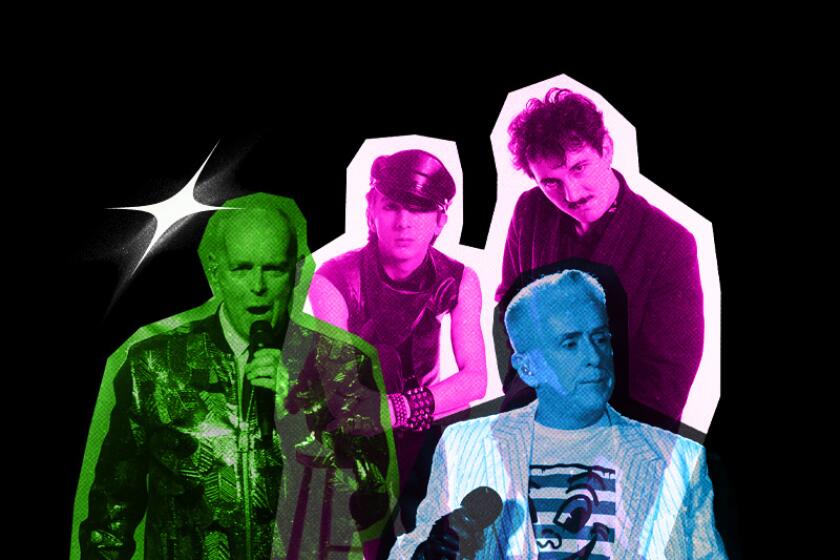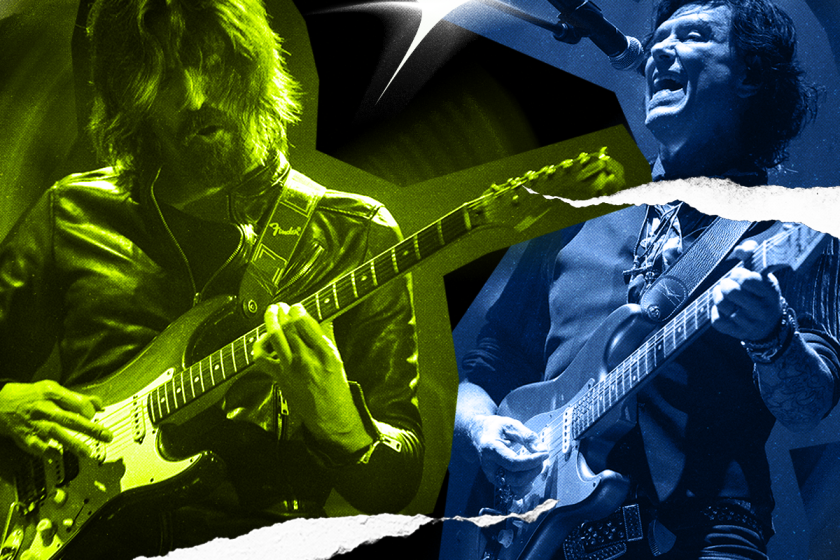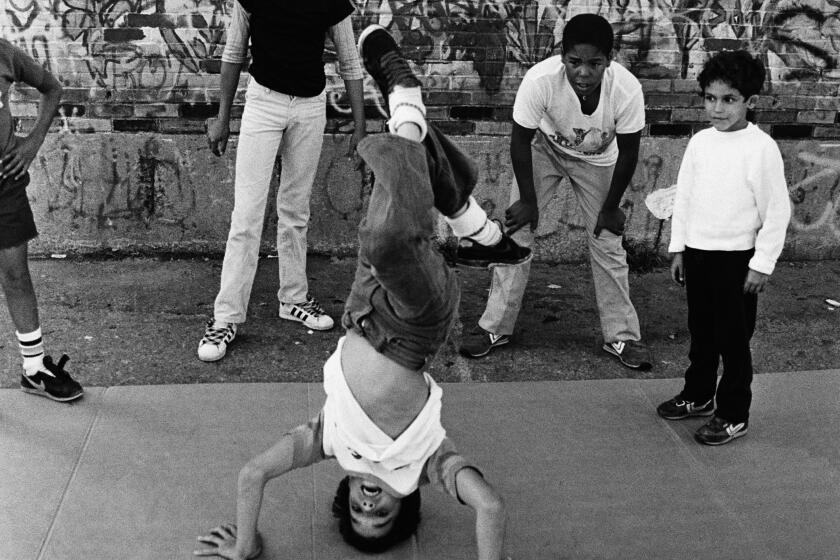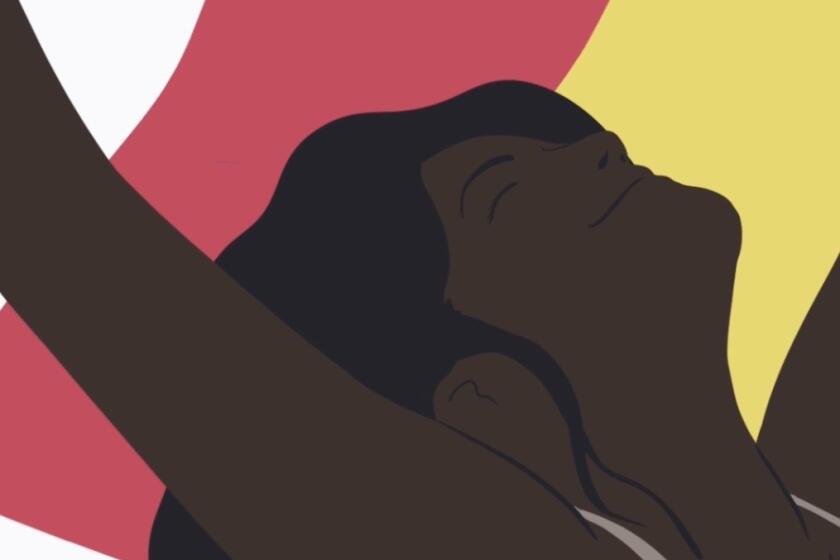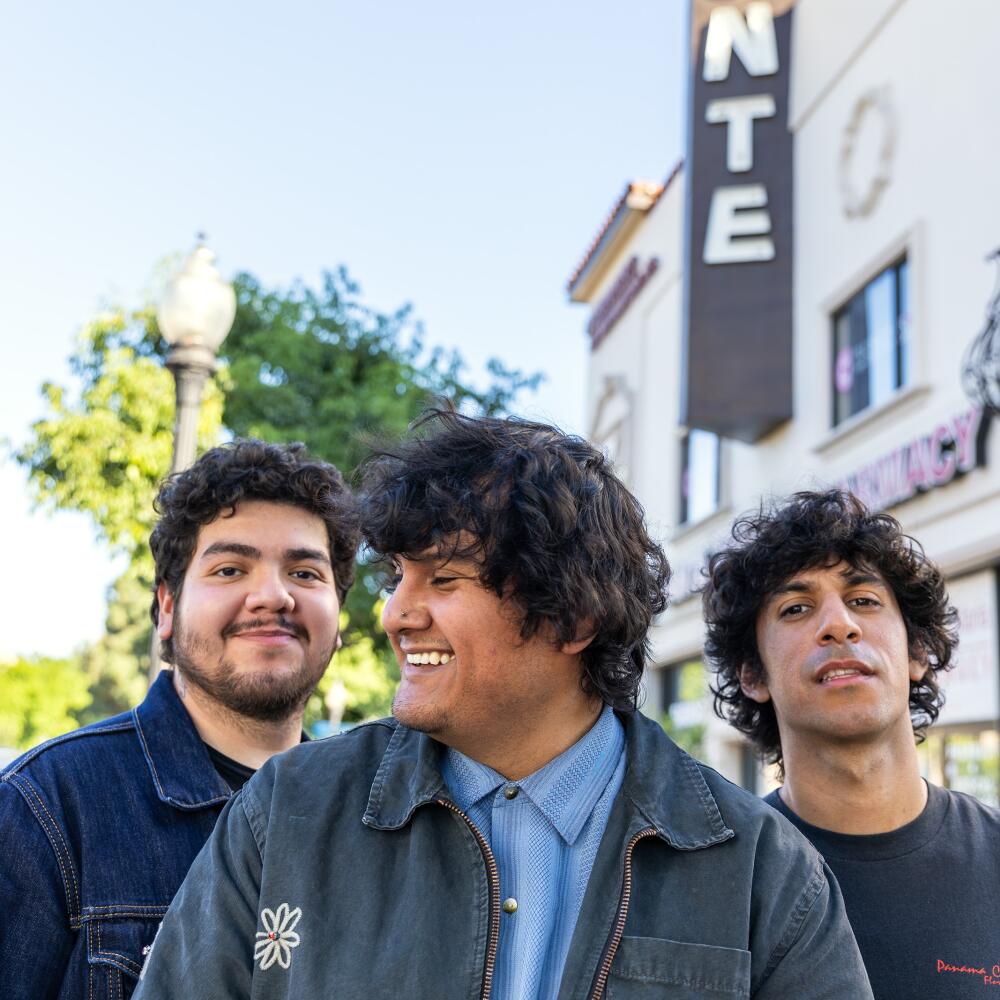
- Share via
On a sweltering afternoon in El Monte, the Red Pears paid a visit to the Valley Mall.
The record store Ritmo Latino, where singer and guitarist Henry Vargas once purchased albums by the White Stripes and Nirvana, is no longer there. But another retail space, Musica Latina, has been selling equipment, CDs, cassette tapes, records, posters and magazines with the music of Mexico since the 1970s. It’s where members of the band purchased their first instruments as kids.
Musica Latina is just one of several places in the predominantly Latino working-class city that have helped the Red Pears forge their musical identity.
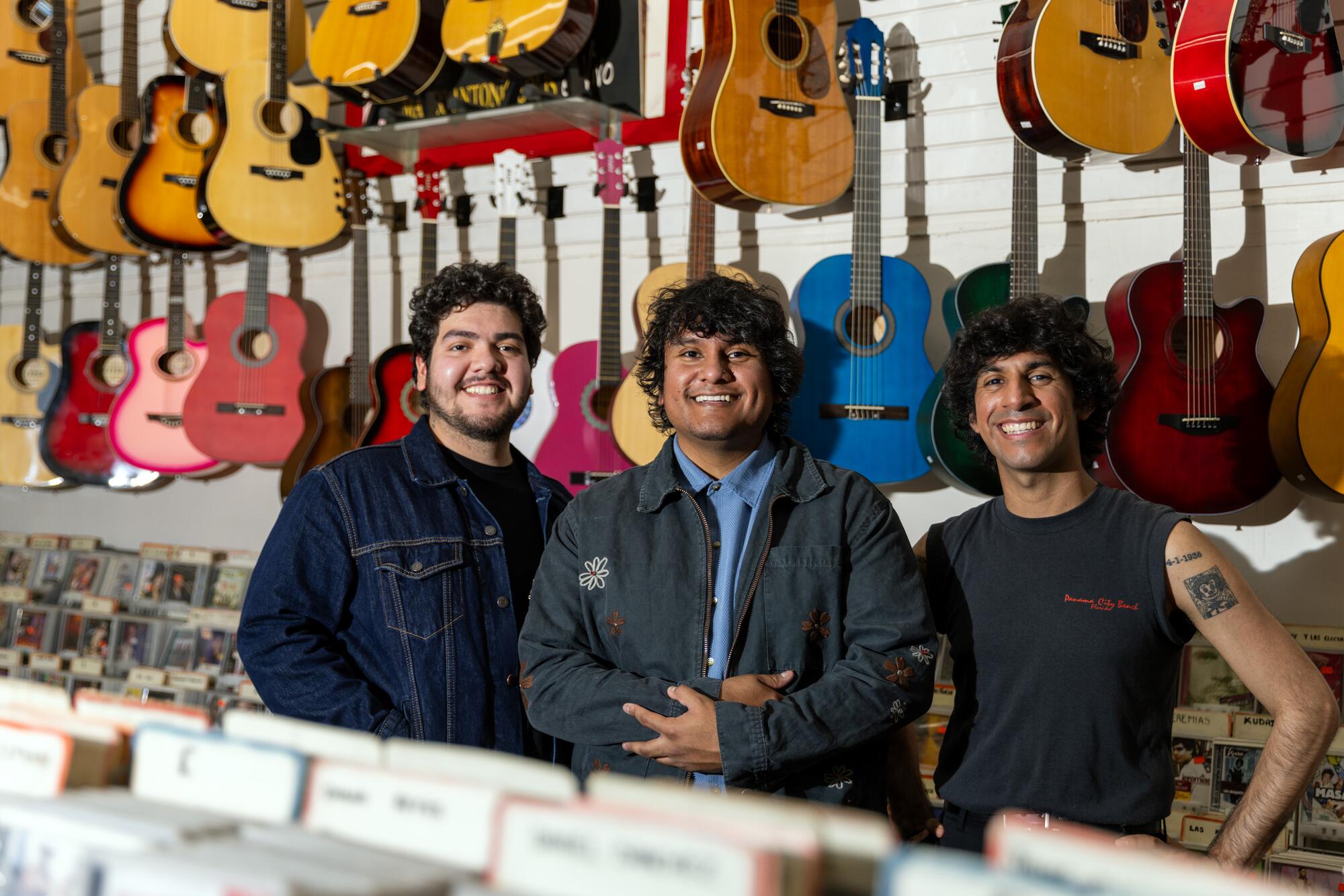
“If I grew up in a fancier place, I wouldn’t have the same mentality I have for certain lyrics or that same aggressiveness I have towards the music,” Vargas said. “Growing up here and being first gen was kind of difficult. Living in apartments and seeing your parents sacrifice everything for you, it makes you want to become better.”
El Monte is a city with a rich musical tradition of its own.Legendary radio disc jockey and concert promoter Art Laboe hosted his famous dance parties at El Monte Legion Stadium. Laboe, who passed away in October 2022, brought music to Southern California that pierced through racial barriers — people of different backgrounds from across the Los Angeles region danced and swooned together to rock ‘n’ roll music by Ritchie Valens and Chuck Berry. These functions were so popular they were immortalized in “Memories of El Monte,” a 1965 local hit performed by the Penguins and co-written by Frank Zappa.
This rich legacy, along with the eclectic music heard in El Monte, heavily influenced the Red Pears’ sound — their music seeps into the likes of balladry, sung along with distorted garage rock rhythms and raw instrumentation.
In the year since its publication, ‘A Kiss across the Ocean: Transatlantic Intimacies of British Post-Punk and US Latinidad’ has connected author Richard T. Rodríguez with fellow admirers of the genre.
Vargas was introduced to Los Ángeles Azules, known for playing cumbia sonidera, and corrido singer Chalino Sánchez. His father also ushered him into heavy metal with bands like Pantera, Slayer, Black Sabbath and Metallica. Bassist Patrick Juarez was initiated into classic rock and the raucous sounds of metal by his dad and his brother, who was part of a local Spanish metal band.
“I remember being in the car with my dad playing Jack FM and hearing rock music, and I was like, ‘this sounds sick,’” Juarez said.
Drummer Jose Corona recalls his mother singing Spanish ballads. At the same time, his father, a painter “who has a great hand,” favored portraiture work and listened to disco and the Beatles.
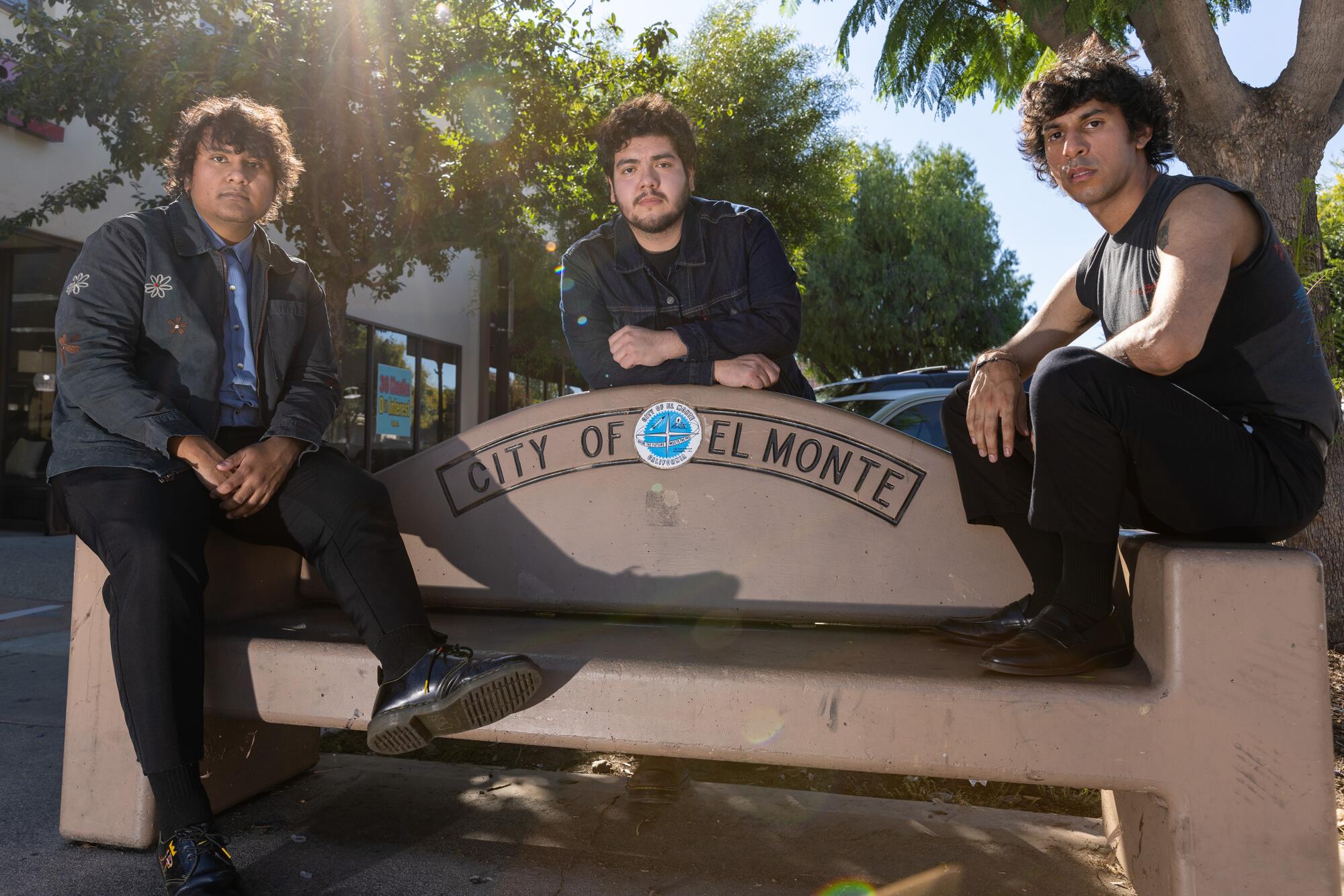
The band’s own name is a nod to the indie rock scene of the early 2000s. Wanting a moniker akin to the two-piece band the White Stripes, Vargas and Corona landed on the name the Red Pears.
They exude “a melancholic and backyard feel, not just in their music but their cover art,” said Romeo Guzmán, a historian and professor at Claremont Graduate University, who co-founded the arts collective South El Monte Arts Posse. “Yes, they are drawing from The Strokes, but when I think of the longer trajectory, including Art Laboe scene and punk rock, they have an S.G.V. sensibility that many of these east side bands [possess].”
The Red Pears’ origins trace back to Mountain View High School, located a few miles from where Laboe hosted his dance parties. It’s where Vargas and Corona connected over heavy guitar riffs and soft melodies. In 2017, the duo welcomed Juarez, a friend from a bordering area in San Gabriel Valley. Though the band has gone on to play across the United States, many of the Red Pears’ formative moments occurred close to home.
Rock en español in Southern California generated a vibrant “Rock Angelino” scene that brought together Latin American immigrants and U.S.-born Latines of different generations.
Their first show was at an open mic at a church in San Gabriel. They practiced in the Corona family’s garage, which his mom used for a daycare center at the time. This physical space became central to their foundation, where they recorded music, produced demos and designed merchandise. There were no green rooms or barriers at their earlier shows; kids jumped off rooftops, crowd surfed and swayed to the garage rock infused tunes until the police would show up.
“There was a whole scene in the San Gabriel Valley, Pomona, Inland Empire and the San Fernando Valley, downtown L.A. too,” Corona said. “This region [had] shows going on at homes and places you wouldn’t think, like we played at a pizza shop or a tire store. It was a big opening for us.”
These places, often hidden, were paramount in their development, creating a platform for them to share their music and engage with their audience.
“You’re just so lost and in love with what you’re doing — and driven — that you don’t think about the failures and the possibilities of what can go wrong,” Corona said.
1
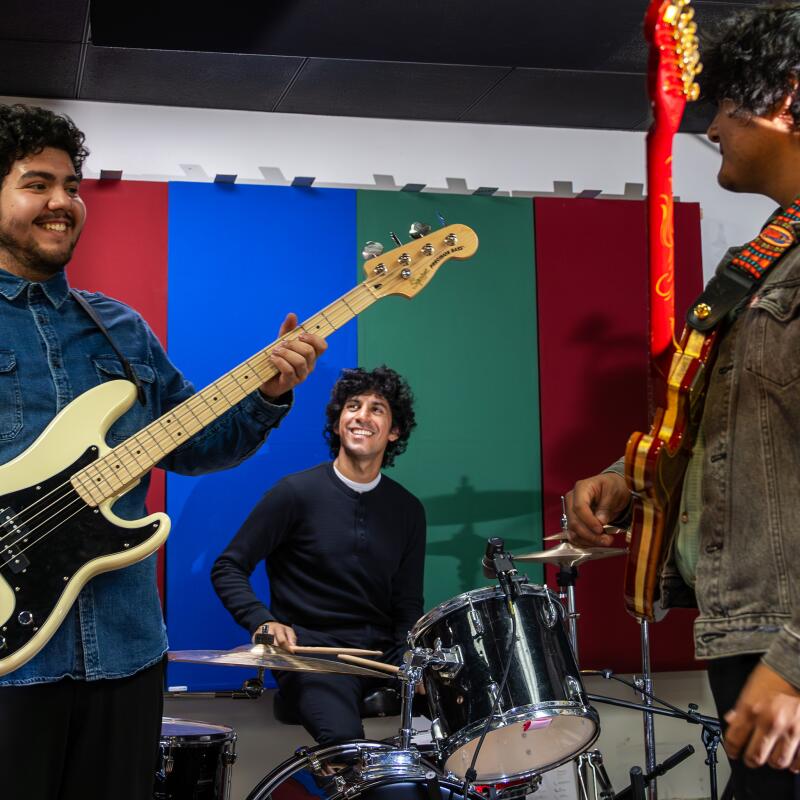
2
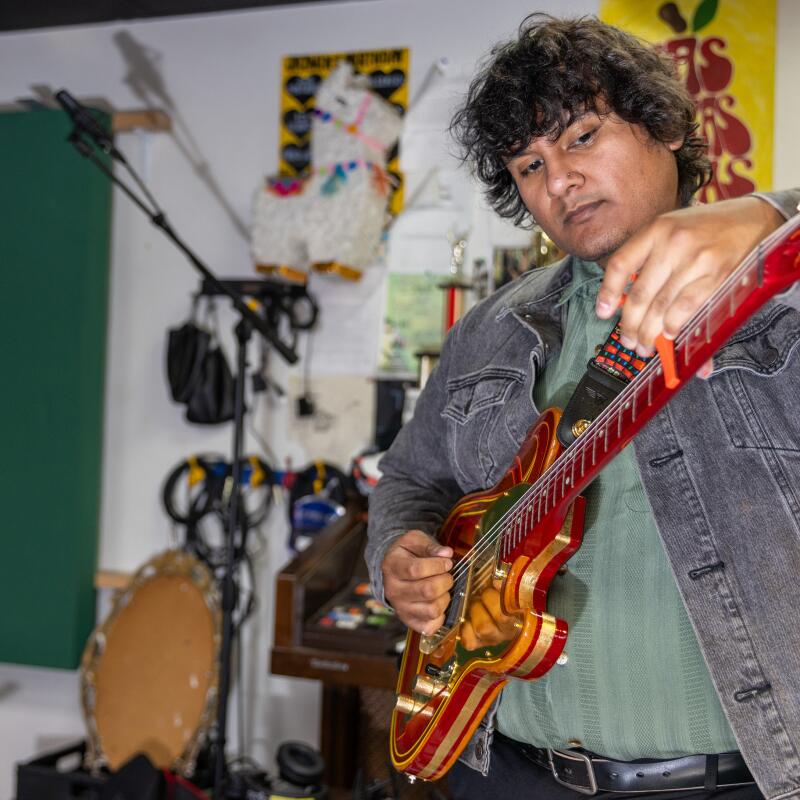
3

4
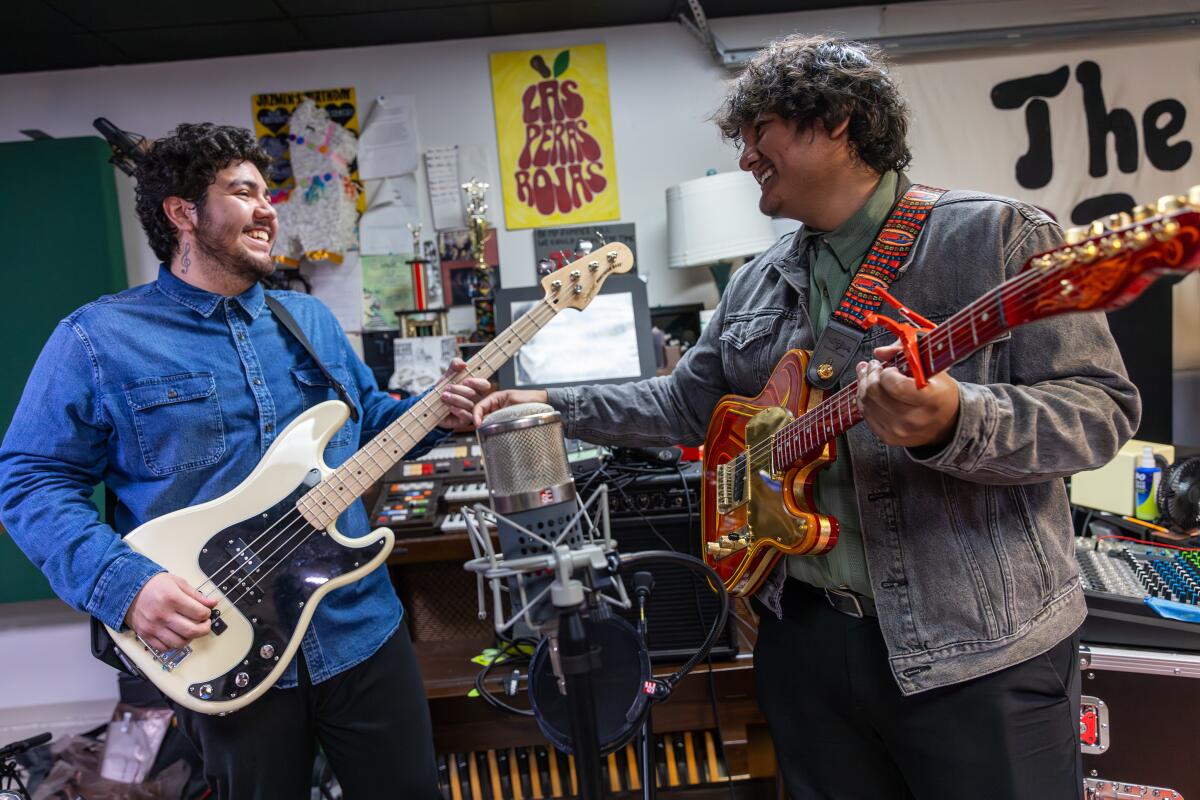
1. The Red Pears rehearse in their garage studio in El Monte. (Sarahi Apaez / For De Los) 2. Henry Vargas of the Red Pears puts a capo on his guitar (Sarahi Apaez / For De Los) 3. Patrick Vargas of the Red Pears. (Sarahi Apaez / For De Los) 4. Patrick Juarez, left and Henry Vargas rehearse at their garage studio in El Monte. (Sarahi Apaez / For De Los)
For much of its existence, the band has has embodied a DIY spirit.
Their first two albums, with long, quirky track titles, were self-released. Songs like “Forever,” “Daylight/Moonlight” and “Away” tug at buried emotions, transitioning from a post-punk raspiness to a washed-out surf rock, then loop into a crash of heavy instrumentals. In “Flowers,” a two-minute number off their 2019 EP “Alicia” (an ode to their mothers), the musical figures meld into each other, teetering between harmonies. Their sound made them a good fit for an emerging scene.
The band is now signed to Cosmica Artists, an independent talent management agency and record label that includes acts like Carla Morrison, Luna Luna and Katzù Oso on its roster. The Red Pears’ recent release, “The Way You Talk,” feels like a summer heartbreak, a stinging lull sinks in the hearts of adolescence and rides waves of nostalgia.

Earlier this year, the Red Pears returned to the Viva Pomona music festival as the headliners, circling back to their roots — a packed house of concertgoers huddled around Juarez as he took to the crowd.
In an appreciation post, the band wrote on Instagram, “Follow your dreams, be persistent, be patient, and don’t give up. You’ll get there.” This dedication to their fans is part of the band’s ethos. They often send uplifting messages to their fans, whom they describe as their extended family.
Break dancing was created in the Bronx by Black and Puerto Rican youth during the 1980s and has since expanded to the world.
This familial union is sealed with the band’s matching signature clown tattoos. Whenever they see people with the same caricature tattoo, it is a reminder they are part of the scene, a united force that is the Red Pears, building a community for their culture and heritage.
“Even though we’re the ones in the band writing the music, we’re in this big hub with our family and the people that support us,” Corona said.
“And they welcome us too, even when we’re miles away from home,” Vargas said, finishing his bandmate’s thought.
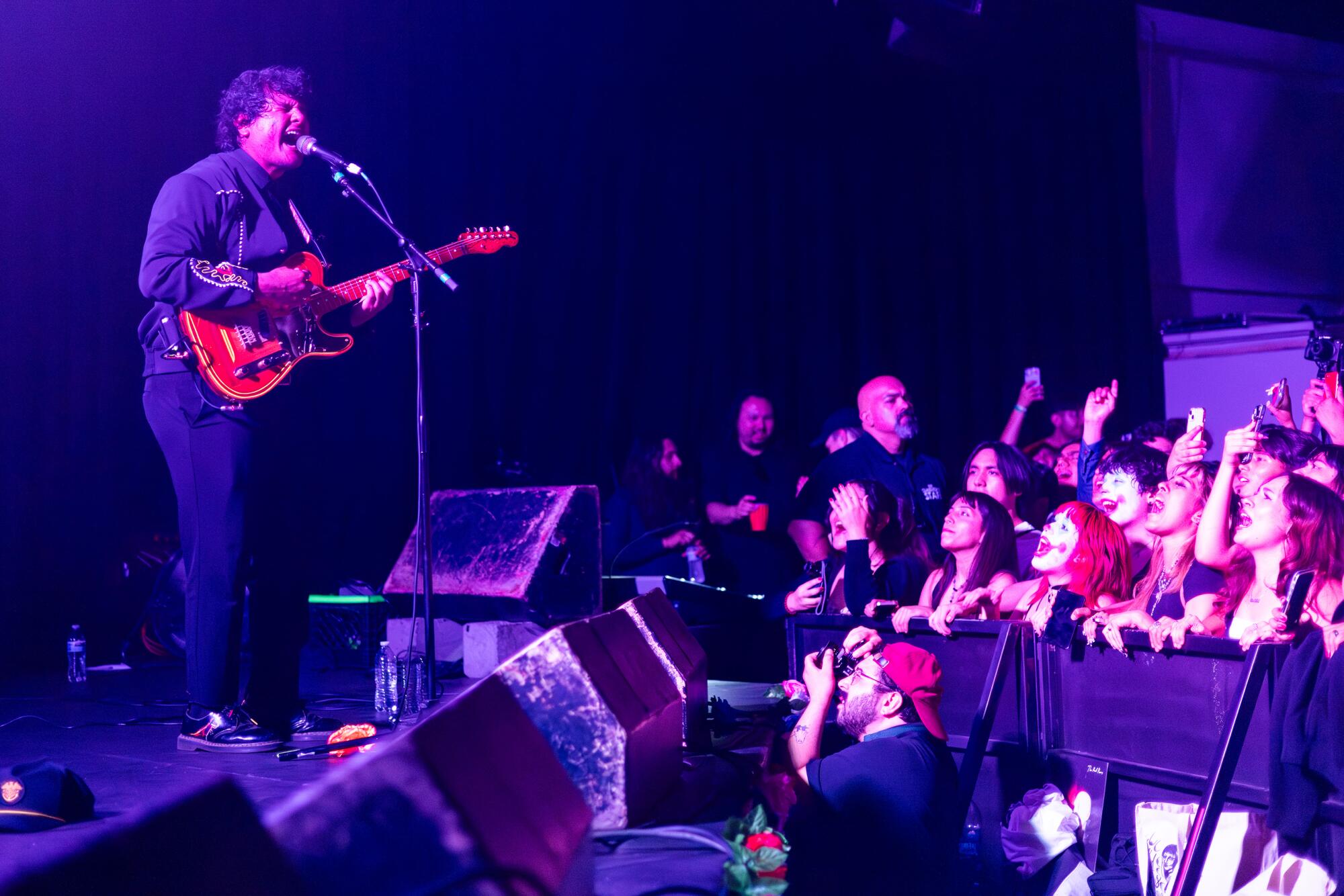
They take pride in seeing their reflection in the audience and bolstering a sense of belonging. It wasn’t always like this, Vargas shared. But now he sees more Latino youth in attendance.
“That’s what we wanted growing up and we didn’t see it,” Vargas said. “It is nice to be a part of that change.”
Los Angeles poet Yesika Salgado curates the first De Los Latino poetry series where poets explore the theme of belonging.
They’re excited to step into new territory, taking the stage this year with Interpol, remembering the days spent studying their technique as teenagers. The Red Pears, however, bestow a similar influence on the next generation of musicians, creating timeless music in cities often overlooked and backyards where the magic happens.
“The reason we all work out, [from] the first tours we were doing in 2018 before we had management or a booking agent, we were all there win or lose,” Vargas said. “You’re risking your life by being on the road; you never know what’s going to happen, but we’re all there for the same reason. And then, years later, we’re still there for the same thing.”
Sarah Quiñones Wolfson is a Los Angeles-based journalist with experience crafting stories focusing on the intersection of arts, culture and social justice. She has written for outlets like the Los Angeles Times, Hyperallergic and KCET.
More to Read
The Latinx experience chronicled
Get the Latinx Files newsletter for stories that capture the multitudes within our communities.
You may occasionally receive promotional content from the Los Angeles Times.

